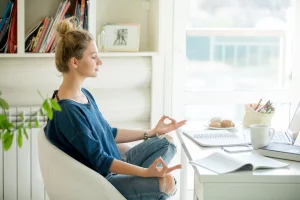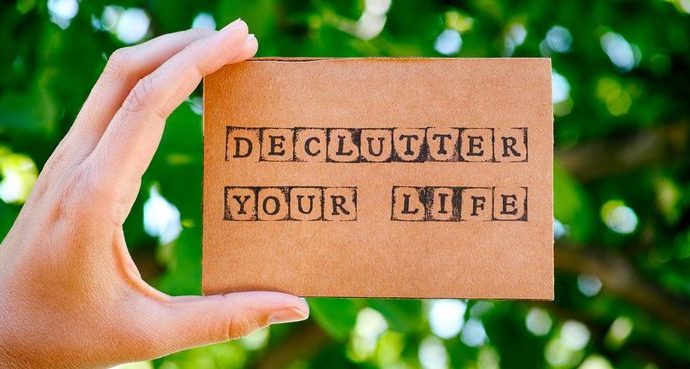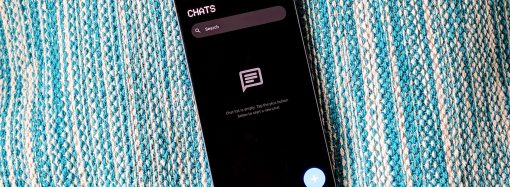Introduction Imagine living in a world with less clutter and more peace. Mindful minimalism is all about removing extra things from your life so you can focus on what really matters. In 2025, many people are choosing to declutter your life and embrace a minimalist lifestyle. This guide will show you how to achieve a
Introduction
Imagine living in a world with less clutter and more peace. Mindful minimalism is all about removing extra things from your life so you can focus on what really matters. In 2025, many people are choosing to declutter your life and embrace a minimalist lifestyle. This guide will show you how to achieve a simpler, happier way of living. The words used here are clear and easy for kids to understand. We will explore simple ideas, useful tips, and practical steps to help you Enjoy Simple Living. Whether you are new to minimalism or looking for fresh ideas, this article will guide you toward a more balanced and joyful life.
What is Mindful Minimalism?

Image by: Yandex.com
Mindful minimalism is a way of living that focuses on removing unnecessary things. It means keeping only what you need and what brings you joy. When you declutter your life, you reduce stress and create a calm space. Mindful minimalism is not just about getting rid of things; it is about being aware of what is truly important. By embracing minimalist lifestyle practices, you learn to appreciate quality over quantity. This approach helps you save time, money, and energy. It encourages you to live with purpose and clarity. In 2025, many families and individuals choose simple living to improve their well-being and find inner peace.
What is Decluttering?

Image by: Yandex.com
Decluttering is the process of cleaning out unwanted items from your home and life. It involves sorting through your belongings and keeping only those that serve a purpose or bring happiness. When you declutter your life, you create a neat and organized environment. This simple act can lead to better focus and reduced stress. Decluttering is a key part of mindful minimalism. It makes it easier to find what you need and enjoy your living space. This practice can be fun when you turn it into a game or challenge. Imagine organizing your room and discovering things you forgot you loved. This journey to simple living starts with a single step.
How to Embrace Simplicity in Daily Life

Image by: Yandex.com
Embracing simplicity means choosing a lifestyle with fewer distractions and more focus on what makes you happy. Start by looking at your daily habits and ask if they add value to your life. For instance, you might reduce the time spent on gadgets and spend more time playing outside or reading. Embracing simplicity helps you make room for creativity and relaxation. When you have less clutter, both physically and mentally, you feel lighter and more at peace. This approach encourages you to focus on quality relationships, hobbies, and experiences. It is a powerful way to improve your overall well-being and enjoy a balanced life.
The Benefits of Mindful Minimalism

Image by: Yandex.com
There are many benefits to adopting mindful minimalism. First, it creates a calm and organized environment. With fewer distractions, your mind can focus better on learning and playing. Second, it saves time and money. When you declutter your life, you spend less time looking for lost items and less money on things you don’t need. Third, it helps reduce stress and anxiety. A clean, simple space can make you feel happier and more relaxed. Lastly, it teaches you to value experiences over possessions. These benefits show that mindful minimalism is a great way to improve your quality of life. Simple habits can lead to big changes that make each day more enjoyable.
Creating a Minimalist Lifestyle at Home

Image by: Yandex.com
Living a minimalist lifestyle at home is easier than you think. Start by choosing one room or area to declutter. Sort through your items and decide what you really need. Donate or recycle items that no longer serve a purpose. Create a space for things that make you feel happy and comfortable. Simple changes like adding a plant or a favorite picture can transform a room. A tidy space helps you feel calm and focused. Over time, this approach will spread to other parts of your life, making you more organized and less stressed. Simple living starts with small, mindful actions that add up to a big difference.
Table: Comparison of Traditional Living vs. Mindful Minimalism
| Aspect | Traditional Living | Mindful Minimalism |
|---|---|---|
| Clutter | Many unnecessary items | Only essential, joyful items |
| Space Utilization | Often overcrowded and disorganized | Clean, organized, and intentional |
| Time Spent | Searching for things, managing excess | More time for creativity and relaxation |
| Emotional Impact | Can lead to stress and anxiety | Reduces stress, increases peace and focus |
| Financial Impact | Higher expenses on non-essential items | Lower costs, better budgeting |
This table shows the clear differences between traditional living and mindful minimalism. By choosing simplicity, you enjoy a more organized, peaceful, and budget-friendly life.
Tips for Practicing Mindful Minimalism

Image by: Yandex.com
Here are some easy tips to help you start your journey toward mindful minimalism. First, set small goals for decluttering. Pick one area, like a desk or closet, and clean it thoroughly. Second, ask yourself if each item is useful or brings you joy. Third, keep only a few special items instead of many. Fourth, take time each day to enjoy your clean space. Lastly, share your progress with friends or family. Celebrating small victories can make the process fun and rewarding. These tips are simple and work well for anyone looking to live a minimalist lifestyle.
How Simple Living Can Improve Your Health and Happiness
Simple living is not only about cleaning up your space; it also helps improve your health and happiness. A clutter-free environment can reduce stress and make you feel more relaxed. When you have less to worry about, you can focus on activities that make you feel good. Mindful minimalism encourages you to eat healthy, exercise, and enjoy quality time with loved ones. By removing unnecessary distractions, you create more space for activities that promote physical and mental well-being. Over time, these positive changes can lead to a happier and healthier lifestyle for both kids and adults.
The Role of Mindfulness in Minimalism
Mindfulness is the practice of being present in the moment. It plays a big role in mindful minimalism. By being aware of your surroundings and your feelings, you can make better choices about what to keep in your life. Mindfulness helps you appreciate the simple things and let go of what you do not need. It teaches you to focus on the here and now. This awareness makes the process of decluttering your life more meaningful and rewarding. With a mindful approach, you create a life that is filled with purpose and simplicity.
Embracing Minimalism for a Better Future in 2025
As we move into 2025, many people are turning to mindful minimalism to create a better future. The challenges of modern life, like stress and overconsumption, can be managed by choosing a simpler path. Mindful minimalism is about making conscious decisions that lead to a more sustainable and balanced life. By embracing minimalist lifestyle practices, you not only improve your personal space but also contribute to a healthier environment. This new way of living shows that less can truly be more. It offers hope for a future where quality matters more than quantity.
FAQs
Q1: What is mindful minimalism?
A: Mindful minimalism is a way of living that focuses on keeping only what is essential and joyful, helping to declutter your life and reduce stress.
Q2: How does decluttering your life help improve well-being?
A: By removing unnecessary items, you create a calm space that makes it easier to focus, relax, and enjoy daily activities.
Q3: Can kids learn about minimalist lifestyle?
A: Yes, the concepts of simple living and mindful minimalism are easy to understand and can help kids appreciate organization and balance.
Q4: What are some simple ways to practice mindful minimalism?
A: Start small by cleaning one area, keep only useful items, and spend time enjoying your clean space. Set clear goals for decluttering.
Q5: How does mindful minimalism benefit the environment?
A: It reduces overconsumption and waste, leading to a more sustainable way of living that benefits both people and the planet.
Conclusion
Mindful minimalism in 2025 offers a path to a cleaner, simpler life by Decluttering your Life and embracing simple living. This approach enhances well-being, reduces stress, and improves both health and happiness. A minimalist lifestyle encourages mindful choices that lead to a balanced and fulfilling life. Embrace minimalism for a brighter, simpler future.
















